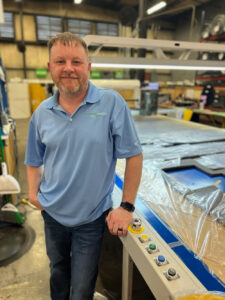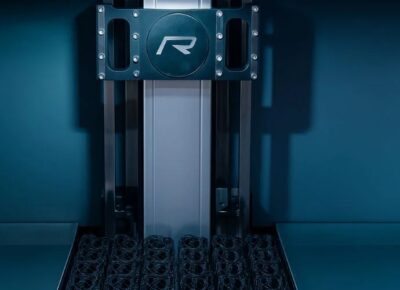Material Matters: Why Foam is Effective for Sound Reduction
Sound management is a critical concern for manufacturers, especially in industrial applications. Loud, persistent noise not only affects working environments for end-users, but it also poses potential health implications like hearing loss. Open-cell foam products aid in blocking or reducing unwanted sound, making it a viable solution for noise management.
What is Open-Cell Foam?
Open-cell foam is very common due to its versatility and affordability. As the name suggests, open-cell foam is characterized by porous, open chambers that allow air, moisture, heat, and sound waves to dissipate. Open-cell foam is also low-density and lightweight.
Foam for Noise Reduction

Scott Furr
President of Technicon Acoustics
Open-cell foam’s breathable nature makes it ideal for capturing unwanted sound, reducing echoes, and minimizing reverbs. Sound waves become trapped inside internal cavities and are converted into heat energy, which is then dispersed. For Scott Furr, president of Technicon Acoustics and loyal Eastman customer, it’s why his customers use polyurethane foam for their products.
“Open-cell foams are generally used to absorb unwanted sound inside enclosures. Think of things that make noise with covers. When combined with different facings and adhesives, they can be tuned to absorb certain frequencies that exist in the noise spectrum,” Furr said.
Foam Cutting with Technicon Acoustics
Technicon Acoustics is one of the leading producers of acoustic and thermal products for manufacturers across North America, creating solutions for marine, mass transportation, power generation equipment, and other critical industries. Polyurethane foam is only one of many materials Technicon Acoustics uses for soundproof products.
Furr and his Technicon Acoustics crew rely on two Eastman Talon multi-ply cutters to cut acoustic foam for customers. However, not every customer has the same requirements. According to Furr, the Talon is especially great for smaller-volume orders and kit cutting for all different kinds of parts. In Technicon Acoustics’ experience, the Talon is capable of tremendous cut time in a single day, meaning the company can maximize efficiency for valuable time and cost savings for its customers.
“The Talon’s ability to advance and continue to cut is invaluable for us. We cut some repetitive parts on these machines, but they are well suited to cutting kits. We’ll combine anywhere between three and 80 parts for a customer into one nest and the Talon will nest and cut the material without the constraint of length. We can cut parts as long as we want. We’re only limited by the width of our material. The software that runs the cutter is great too. Being able to add or subtract parts inside the software… is so easy compared to other machines we’ve used,” said Furr.
Furr knows his business can always count on Eastman. “Eastman’s technical support is unmatched! The technical team has always been helpful and willing to help.”
 FR
FR






